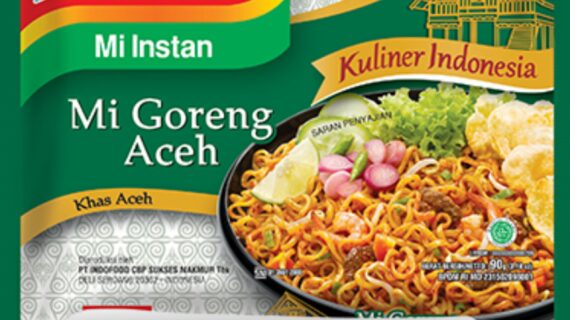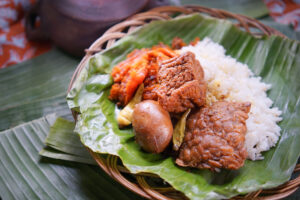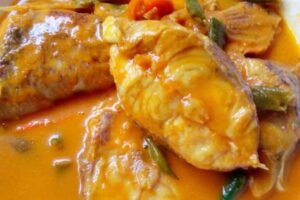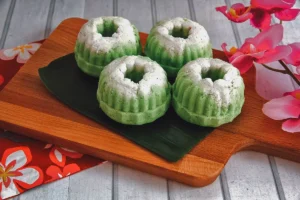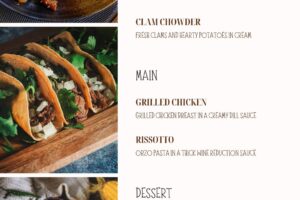Indonesia, a vast archipelago stretching across thousands of islands, is not only renowned for its natural beauty but also for its rich cultural heritage. Among the most captivating aspects of this diversity is its regional cuisine, which reflects the unique traditions, ingredients, and histories of each province. From the spicy and aromatic dishes of Sumatra to the tropical flavors of Papua, every region offers a distinct culinary experience that tells a story of its people and environment.
This article delves into the fascinating world of Indonesian regional specialties, highlighting 38 traditional dishes from all provinces. These foods are more than just meals—they are symbols of identity, history, and community. Let’s embark on a flavorful journey through the heart of Indonesia’s culinary landscape.
1. Mi Aceh – Aceh
Originating from the northernmost province of Indonesia, Mi Aceh is a beloved noodle dish known for its thick, yellow noodles and rich, spiced broth. The dish typically includes slices of beef or goat meat, along with seafood like squid and shrimp. Served alongside a fragrant kari (curry), Mi Aceh is a staple in Acehnese culture and a must-try for visitors.
2. Bika Ambon – North Sumatra

Despite its name, Bika Ambon is a specialty of North Sumatra, not Ambon. This soft, spongy cake is made from tapioca flour, eggs, sugar, and coconut milk. Its distinctive texture features small air pockets inside, giving it a unique chewiness. The sweetness is balanced by a slight tang, making it a popular souvenir for travelers visiting Medan.
3. Rendang – West Sumatra
Rendang is perhaps the most famous Indonesian dish globally. Originating from West Sumatra, this slow-cooked beef dish is simmered in a rich coconut milk sauce infused with lemongrass, galangal, and a blend of spices. Traditionally cooked over an open fire, rendang is a symbol of hospitality and is often served during celebrations and special occasions.
4. Gulai Ikan Patin – Jambi
Gulai ikan patin is a signature dish from Jambi, featuring catfish cooked in a spicy coconut milk-based curry. What sets it apart is the addition of tempoyak, a fermented durian paste, which gives the dish a unique, pungent flavor. While some prefer to substitute tempoyak with coconut milk, the original version remains a favorite among locals.
5. Pendap – Bengkulu
Pendap, also known as ikan pais, is a traditional dish from Bengkulu. It consists of sea fish wrapped in talis (banana leaves) or keladi (elephant ear leaves) and steamed or grilled for hours. The fish is seasoned with a variety of spices, resulting in a tender and aromatic meal that showcases the region’s coastal influences.
6. Gulai Belacan – Riau
Gulai belacan is a vibrant dish from Riau, featuring shrimp or fish cooked in a coconut milk-based sauce with belacan (shrimp paste). The dish is seasoned with a mix of spices, including turmeric, ginger, and lemongrass, creating a complex and savory flavor profile. It is often enjoyed with rice or flatbreads.
7. Otak-Otak – Riau Islands
Otak-otak, a beloved street food in the Riau Islands, is a grilled fish cake made from minced fish and spices, wrapped in coconut leaves. Unlike the white otak-otak found in Palembang, the Riau version is golden-brown and has a smoky aroma. It is typically served with a spicy sambal sauce.
8. Empek-Empek – South Sumatra
Empek-empek, or pempek, is a iconic dish from South Sumatra. Made from ground fish and tapioca flour, it comes in various forms, such as empek-empek lenjer (flat cakes) and keriting (twisted shapes). Served with cuko (a sweet and sour sauce made from palm sugar, tamarind, and chili), this dish is a staple in local markets and restaurants.
9. Mi Bangka – Bangka Belitung
Mi Bangka is a popular noodle dish from the Bangka-Belitung Islands. It features thin, flat noodles served in a broth infused with seafood or chicken, topped with chopped vegetables like spinach and sprouts. The dish is a reflection of the region’s maritime culture and is often enjoyed with a side of fried crackers.
10. Seruit – Lampung
Seruit is a traditional fish soup from Lampung, made with grilled or fried fish and a tangy tamarind-based broth. It is seasoned with terasi (shrimp paste) and belimbing wuluh (star gooseberry), giving it a refreshing and slightly sour taste. The dish is often paired with tempoyak for added depth.
11. Sate Bandeng – Banten
Sate bandeng is a unique variation of satay from Banten, made from freshwater fish (bandeng) that is deboned, mashed, and seasoned before being skewered and grilled. The dish is served with a spicy peanut sauce and is a popular choice at local festivals and gatherings.
12. Kerak Telur – Jakarta
Kerak telur is a traditional Betawi dish from Jakarta, consisting of a crispy egg cake made from beaten eggs, rice, and ebi (dried shrimp). Topped with fried shallots and toasted coconut, it has a salty, savory flavor and is often enjoyed during festive events like the Pekan Raya Jakarta fair.
13. Serabi – West Java
Serabi is a traditional pancake from West Java, made from wheat flour and served with kinca (a sweet coconut syrup). Variations include serabi oncom (with fermented soybean paste) and serabi kacang (with peanuts). Its soft, fluffy texture and sweet-savory balance make it a beloved breakfast item.
14. Lumpia – Central Java
Lumpia, or spring rolls, are a popular snack in Central Java. They consist of thin, crispy pastry wraps filled with a mixture of vegetables, pork, or shrimp. Often served with a tangy tomato sauce and pickled vegetables, lumpia is a staple at street food stalls and markets.
15. Gudeg – Yogyakarta
Gudeg is a beloved dish from Yogyakarta, made from young jackfruit simmered in a sweet and savory sauce of palm sugar, coconut milk, and spices. It is typically served with grilled chicken, tofu, or tempe, accompanied by a side of krecek (crispy pig skin). Gudeg is a symbol of Javanese cuisine and is often enjoyed during religious ceremonies.
16. Rujak Cingur – East Java
Rujak cingur is a unique fruit salad from East Java, featuring a mix of fruits like bengkuang, mango, and pineapple, along with boiled beef tongue (cingur). The dish is dressed with a spicy peanut sauce, creating a harmonious blend of sweet, sour, and spicy flavors.
17. Ayam Betutu – Bali

Ayam betutu is a traditional Balinese dish where chicken is marinated in a rich blend of spices, wrapped in banana leaves, and slow-cooked until tender. The result is a deeply flavored, aromatic meal that reflects the island’s culinary traditions and love for bold flavors.
18. Ayam Taliwang – West Nusa Tenggara
Ayam Taliwang is a fiery dish from Lombok, featuring grilled chicken marinated in a spicy chili paste made from red chili, garlic, and shallots. It is often served with plecing kangkung (water spinach with chili and lime), creating a perfect balance of heat and freshness.
19. Catemak Jagung – East Nusa Tenggara
Catemak jagung is a simple yet hearty dish from East Nusa Tenggara, made from corn, legumes, and spices. It is a staple in rural areas and is often enjoyed as a comforting meal, especially during colder weather.
20. Bubur Pedas Sambas – West Kalimantan
Bubur pedas Sambas is a spicy rice porridge from West Kalimantan, made from rice, fish, and a variety of vegetables. It is seasoned with a mix of spices and served with a side of sambal (chili sauce), making it a flavorful and satisfying meal.
21. Juhu Singkah – Central Kalimantan
Juhu singkah is a traditional dish from Central Kalimantan, made from wild yam roots and cooked with coconut milk and spices. It has a unique, earthy flavor and is often served with grilled fish or vegetables.
22. Soto Banjar – South Kalimantan
Soto Banjar is a traditional chicken soup from South Kalimantan, made with a clear broth infused with spices like cinnamon, cloves, and star anise. It is often served with perkedel (potato fritters), boiled eggs, and ketupat (rice cakes).
23. Ayam Cincane – East Kalimantan
Ayam Cincane is a spicy grilled chicken dish from East Kalimantan, marinated in a blend of garlic, chili, and salt before being grilled over charcoal. It is known for its smoky flavor and is often served with rice and sambal.
24. Kepiting Soka – North Kalimantan

Kepiting Soka is a delicacy from North Kalimantan, featuring large crabs that are either fried or cooked in a spicy sauce. The crabs are known for their tender meat and are often enjoyed with kerupuk (shrimp crackers) and rice.
25. Sup Konro – South Sulawesi
Sup Konro is a traditional beef rib soup from South Sulawesi, made with beef ribs, a rich coconut milk broth, and a blend of spices. It is often served with ketupat and is a staple in local households.
26. Ikan Jantung Pisang – Central Sulawesi
Ikan jantung pisang is a traditional fish dish from Central Sulawesi, featuring fish cooked with jantung pisang (banana heart), coconut milk, and herbs. The dish has a fresh, slightly acidic taste and is often served with rice.
27. Lapa-Lapa – Southeast Sulawesi
Lapa lapa is a traditional rice cake from Southeast Sulawesi, made from glutinous rice and wrapped in banana leaves. It is steamed and served with ikan asin (salted fish) or opor (spiced meat), making it a versatile and flavorful dish.
28. Binte Biluhuta – Gorontalo
Binte Biluhuta is a traditional corn soup from Gorontalo, made with fresh corn, shrimp, and a blend of spices. It is a hearty and nutritious dish that reflects the region’s agricultural abundance.
29. Tinutuan – North Sulawesi
Tinutuan is a traditional vegetable porridge from North Sulawesi, made from a mix of rice, pumpkin, corn, and spinach. It is often served with ikan asin (salted fish) or sambal roa (chili paste), making it a comforting and nourishing meal.
30. Bolu Paranggi – West Sulawesi
Bolu Paranggi is a traditional coconut cake from West Sulawesi, made from a combination of sugar, flour, eggs, and coconut. It has a sweet, dense texture and is often enjoyed as a dessert or snack.
31. Ikan Asar – Maluku
Ikan Asar is a traditional smoked fish dish from Maluku, made by drying and smoking fish in a horizontal position. It is often served with nasi hangat (warm rice) and sambal colo-colo (a spicy chili sauce), creating a delicious and rustic meal.
32. Gohu Ikan – North Maluku
Gohu Ikan is a traditional raw fish dish from North Maluku, similar to sushi. It features thinly sliced tuna or mackerel, served with a dressing of shallots, chili, and cashews. The dish is known for its fresh, zesty flavor.
33. Ikan Bakar Manokwari – West Papua
Ikan Bakar Manokwari is a traditional grilled fish dish from West Papua, made with local fish species like tongkol. It is served with a spicy sambal Manokwari and is a favorite among locals and visitors alike.
34. Kue Sagu – Central Papua
Kue Sagu is a traditional cassava cake from Central Papua, made from cassava flour and coconut. It has a crunchy exterior and a soft interior, making it a popular snack among the indigenous communities.
35. Papeda – East Papua
Papeda is a traditional cassava porridge from East Papua, made from cassava flour and water. It is often served with a spicy ikan kuah kuning (yellow fish soup) and is a staple in many Papuan households.
36. Aunu Senebere – South Papua
Aunu Senebere is a traditional dish from South Papua, made from dried anchovies mixed with talas (taro). It has a dry, crunchy texture and is often eaten as a snack or side dish.
37. Cacing Laut Insonem – West Papua
Cacing Laut Insonem is a unique dish from West Papua, featuring a type of sea worm that is deep-fried and seasoned with salt or chili. Despite its unusual appearance, it is considered a delicacy and is often enjoyed during special occasions.
38. Udang Selingkuh – Papua Highlands
Udang Selingkuh is a traditional shrimp dish from the highlands of Papua, known for its large claws and sweet, tender meat. It is often grilled or fried and is a favorite among locals for its rich flavor.
Conclusion: A Taste of Indonesia’s Cultural Tapestry
The diversity of Indonesian regional cuisine is a testament to the country’s rich cultural heritage and the ingenuity of its people. Each dish tells a story of tradition, adaptation, and local resources, offering a unique glimpse into the lives of those who call these regions home. Whether you’re savoring the smoky flavors of ayam betutu in Bali or the delicate sweetness of bika ambon in North Sumatra, every bite is a celebration of Indonesia’s culinary artistry. So, next time you visit a new province, be sure to explore its local specialties and discover the flavors that define its identity.

